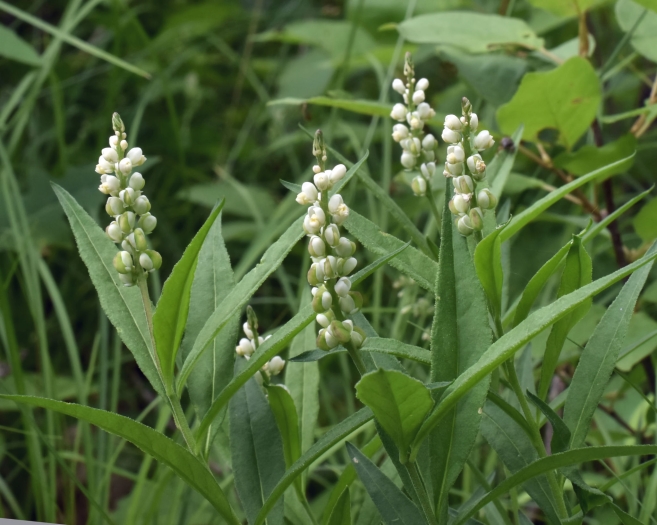Seneca Snakeroot
(Polygala senega)
Seneca Snakeroot (Polygala senega)
/
/

davecz2
CC BY-SA 4.0
Image By:
davecz2
Recorded By:
Copyright:
CC BY-SA 4.0
Copyright Notice:
Photo by: davecz2 | License Type: CC BY-SA 4.0 | License URL: http://creativecommons.org/licenses/by-sa/4.0/ | Rights Holder: davecz2 | Publisher: iNaturalist | Date Created: 2018-06-10T07:48:19-07:00 |

























Estimated Native Range
Summary
Polygala senega, commonly known as Seneca snakeroot, is a perennial herb that thrives in a variety of habitats including dry to moist woods, grasslands, and rocky outcrops in southern Canada and the central and eastern United States. It typically grows up to 20 inches tall and features narrow, lance-shaped leaves. From late spring to early summer, it produces dense spikes of small, white or greenish flowers that are somewhat showy. The plant’s root system is fibrous and hardy, allowing it to survive in less hospitable soil conditions.
Seneca snakeroot is valued for its medicinal properties, particularly its root, which was traditionally used by Native Americans to treat snakebites and various other ailments. Today, it is still harvested for herbal remedies, contributing to its economic importance. In cultivation, it is sometimes used in native plant gardens and restoration projects due to its adaptability to different soil types and its ability to attract pollinators. It prefers full sun to partial shade and requires well-drained soil. While generally low-maintenance, overharvesting in the wild and habitat destruction are significant threats to its sustainability, and gardeners are encouraged to source plants responsibly.CC BY-SA 4.0
Seneca snakeroot is valued for its medicinal properties, particularly its root, which was traditionally used by Native Americans to treat snakebites and various other ailments. Today, it is still harvested for herbal remedies, contributing to its economic importance. In cultivation, it is sometimes used in native plant gardens and restoration projects due to its adaptability to different soil types and its ability to attract pollinators. It prefers full sun to partial shade and requires well-drained soil. While generally low-maintenance, overharvesting in the wild and habitat destruction are significant threats to its sustainability, and gardeners are encouraged to source plants responsibly.CC BY-SA 4.0
Plant Description
- Plant Type: Herb
- Height: 0.5-1.5 feet
- Width: 0.5-1.5 feet
- Growth Rate: Slow, Moderate
- Flower Color: Green, White
- Flowering Season: Spring, Summer
- Leaf Retention: Deciduous
Growth Requirements
- Sun: Full Sun
- Water: Medium
- Drainage: Fast, Medium
Common Uses
Butterfly Garden, Deer Resistant, Low Maintenance
Natural Habitat
Thrives in dry to moist woods, grasslands, and rocky outcrops
Other Names
Common Names: Seneca Snakeroot Polygala, Senega Snakeroot, Senega-Root, Sengaroot, Seneca Root, Rattlesnake Root
Scientific Names: , Polygala senega, Polygala albida, Polygala lonchophylla, Polygala rosea, Polygala senega var. albida, Polygala senega var. dentata, Polygala senega var. latifolia, Polygala senega var. senega, Polygala seneka
GBIF Accepted Name: